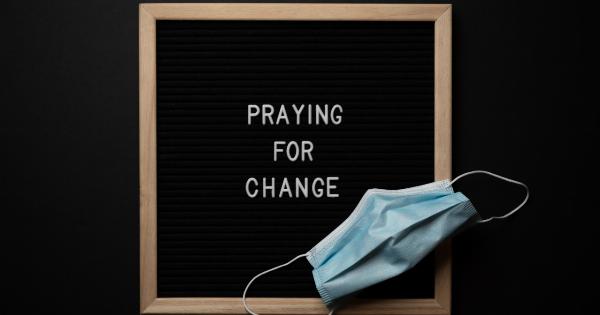Cancer treatment is a complex and costly process that often puts a significant financial burden on patients and their families.
The expenses associated with cancer treatment can be overwhelming, ranging from medical bills and medication costs to transportation and caregiving expenses. In this article, we will explore the various financial costs involved in cancer treatment and discuss potential ways to manage and alleviate these burdens.
The Rising Cost of Cancer Treatment
Over the years, the cost of cancer treatment has been steadily increasing, posing challenges for cancer patients and their loved ones.
According to a study published in the journal JAMA Oncology, the cost of cancer care has risen two to three times faster than the overall inflation rate. This trend is concerning, as cancer treatments are often prolonged and require multiple interventions, including surgery, chemotherapy, radiation therapy, and targeted therapy.
Direct Medical Costs
One of the primary financial burdens associated with cancer treatment is the direct medical costs. These costs include doctor visits, laboratory tests, surgeries, chemotherapy sessions, radiation therapy sessions, and medications.
The expenses can quickly add up, especially when considering the need for ongoing treatment and maintenance therapies.
Health insurance coverage plays a crucial role in managing these costs. However, even with insurance, there are often copayments, deductibles, and out-of-pocket expenses that patients must bear.
Additionally, some cancer treatments may not be fully covered by insurance, leading to additional expenses that individuals and families must shoulder.
Indirect Medical Costs
Beyond direct medical costs, there are several indirect costs associated with cancer treatment.
These include transportation to and from treatment facilities, parking fees, and accommodation expenses for patients who need to travel long distances for specialized care. Additionally, caregiving costs can arise if a patient requires assistance with daily activities or if a family member needs to take time off work to provide support.
Maintaining a balanced diet and overall wellness during cancer treatment is crucial. However, specialized diets, nutritional supplements, and alternative therapies can also add to the overall financial burden.
Long-Term Financial Impact
The financial impact of cancer treatment can extend well beyond the immediate costs. Many cancer survivors face long-term consequences, such as decreased ability to work or obtain employment due to treatment-related side effects.
This can result in a significantly reduced income, making it challenging to cover ongoing medical expenses and maintain a decent quality of life.
In some cases, individuals may be forced to dip into their savings or retirement funds to pay for cancer treatment, leading to further financial instability in the future.
The long-lasting effects of cancer treatment can create a cycle of financial distress that takes years to recover from.
Managing the Financial Burden
While the financial burden of cancer treatment is significant, there are strategies and resources available to help manage and alleviate some of the costs. Here are a few options to consider:.
1. Health Insurance and Medicare
It is vital to thoroughly understand your health insurance coverage and benefits. Be aware of any out-of-pocket expenses, such as copayments, deductibles, and coinsurance.
Research different insurance plans to find the one that offers the best coverage for cancer treatment. If eligible, explore the benefits provided by the Medicare program for individuals aged 65 and older.
2. Financial Assistance Programs
Many organizations offer financial assistance programs to help cancer patients cope with the costs of treatment. These programs can provide grants, financial aid, or discounted services.
Reach out to local cancer support centers, nonprofit organizations, and advocacy groups to inquire about available assistance programs.
3. Patient Assistance Programs
Pharmaceutical companies often have patient assistance programs that provide free or reduced-cost medication to individuals who meet specific eligibility criteria. Speak with your healthcare provider or pharmacist to explore these options.
Additionally, generic medications may be available at a lower cost, so discuss alternatives with your healthcare team.
4. Cancer-specific Organizations
Cancer-specific organizations, such as the American Cancer Society, offer various resources to help individuals navigate the financial challenges of cancer treatment.
These resources include financial guidance, support groups, and online tools to estimate and plan for treatment costs.
5. Financial Planning
Developing a financial plan can help manage the costs of cancer treatment. Work with a financial planner or advisor to create a budget, explore insurance options, and explore potential sources of financial assistance.
Setting aside an emergency fund for unexpected expenses can provide some peace of mind during treatment.
6. Open Communication
Open communication with your healthcare team is essential. Discuss your concerns about the financial burden and explore potential cost-saving options.
They may be able to suggest generic medications, alternative treatment approaches, or recommend clinical trials that offer financial support for eligible patients.
It is crucial to remember that you are not alone in this journey. Reach out to loved ones, support groups, or counseling services to seek emotional support and guidance during this challenging time.
Conclusion
The financial costs associated with cancer treatment can be overwhelming and have long-lasting effects on individuals and families.
Understanding your health insurance coverage, exploring financial assistance programs, and developing a comprehensive financial plan can help alleviate some of the burden. Remember to seek emotional support and lean on available resources to navigate through the challenges of managing cancer treatment costs.



























